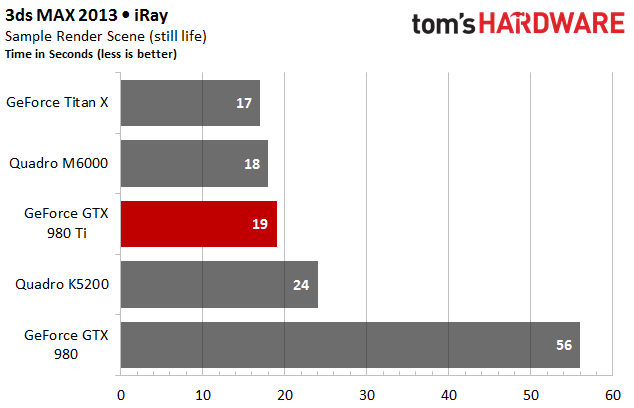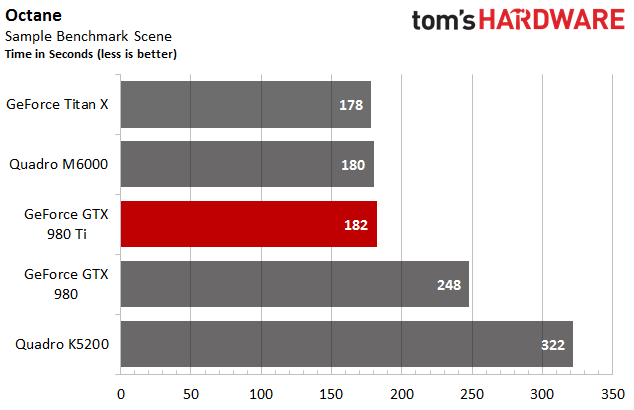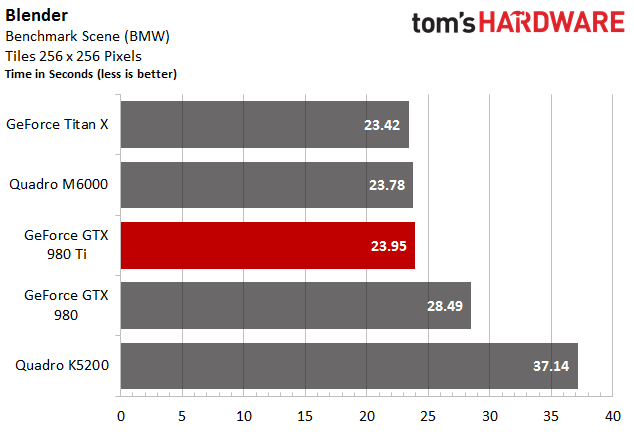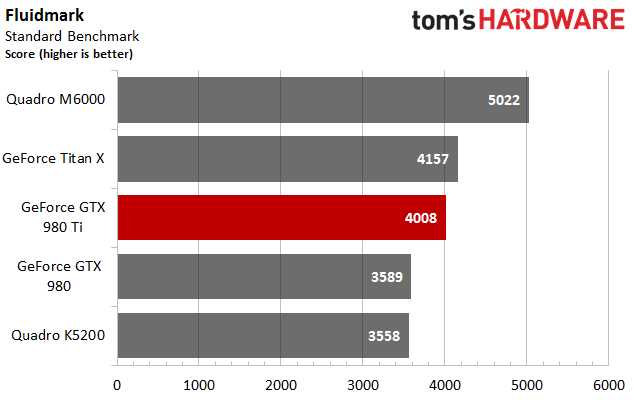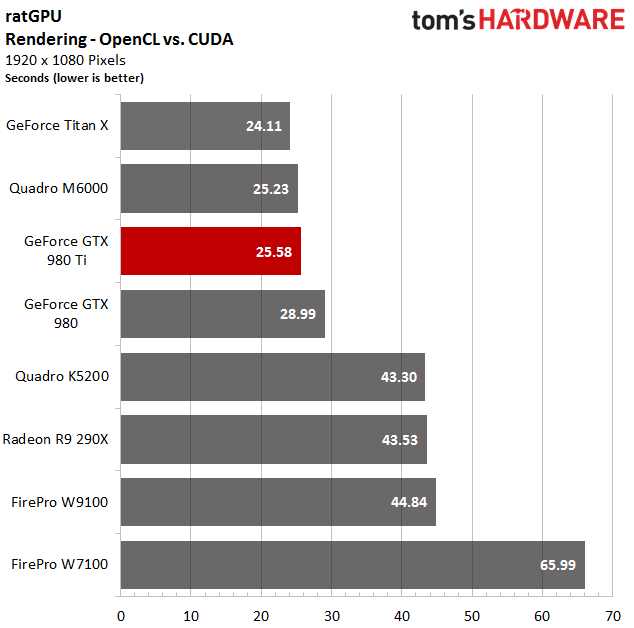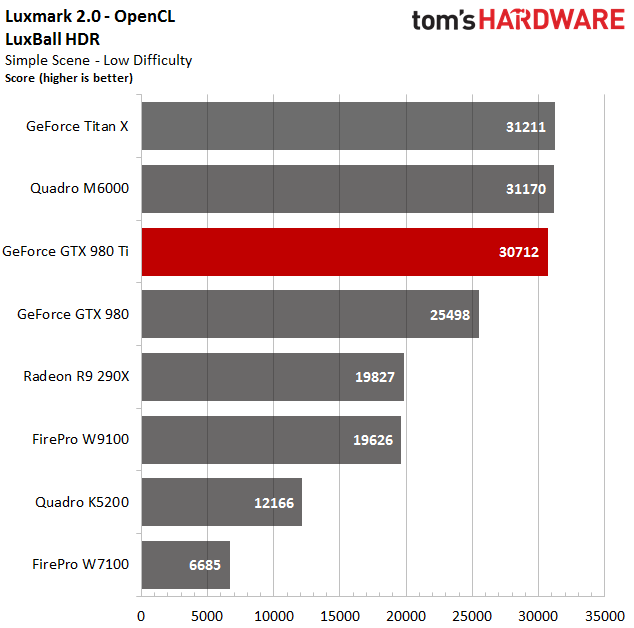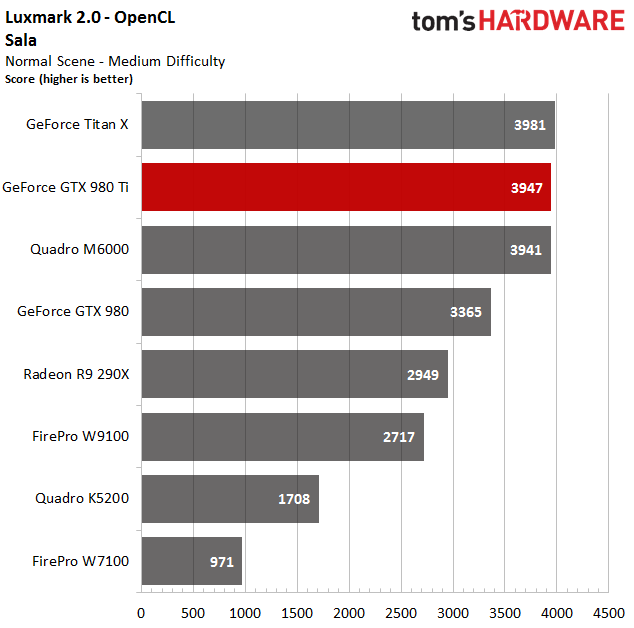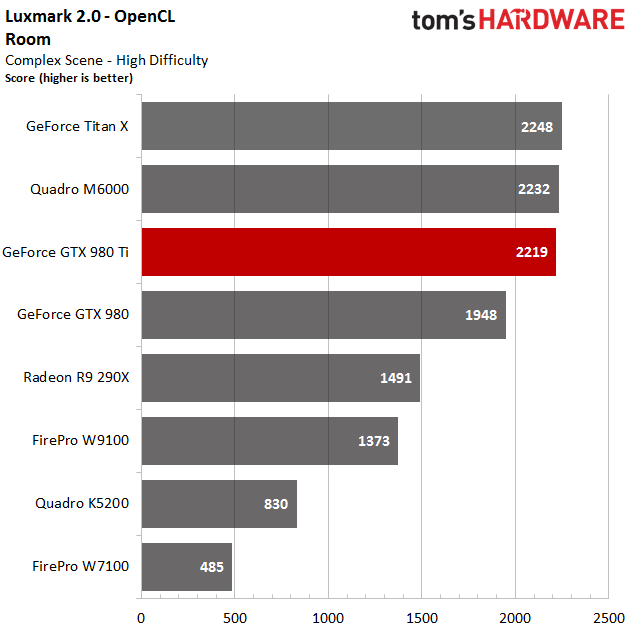Nvidia GeForce GTX 980 Ti 6GB Review
CUDA And OpenCL
3ds Max 2013 and Iray
Nvidia’s big Maxwell-based graphics cards excel when it comes to Iray. We’re not even taking into account that the company has many new plug-ins for Iray in development, which will soon leave the beta stage and become available for end users.
Octane 2.7
The distances between graphics cards are just about as large as we’d expect them to be. Despite the fact that it loses two SMMs, Nvidia’s GeForce GTX 980 Ti stays just under the full chip’s performance level due to our sample's higher GPU Boost clock rate.
Blender 2.73
Everything we just wrote applies here as well. We’ve purposefully chosen a tile size of 256x256 pixels, which is proven to be optimal for GPU-based rendering. The performance delta between cards is again almost the same.
CUDA: FluidMark
Synthetic benchmark results can be difficult to interpret, particularly when they deviate from real-world scores. This case is no exception, given the somewhat surprising outcome. Nvidia’s Quadro M6000, with its slightly lower core frequency, beats the GeForce GTX Titan X quite clearly. The reason for this can most probably be traced back to better-optimized drivers. Both Nvidia’s GeForce GTX Titan X and 980 Ti are slower than they should be based on their hardware.
OpenCL vs. CUDA: ratGPU
This comparison is admittedly not entirely fair, since it involves CUDA and OpenCL. However, it’s certainly not just due to the software's better CUDA implementation that the GeForce GTX Titan X, GeForce GTX 980 Ti and Quadro M6000 do so well.
OpenCL Rendering: LuxMark 2.0
We run all three levels of complexity enabled by LuxMark. The two new Maxwell-based flagships destroy their competition. Hawaii-based graphics cards might have been on top in this metric a while ago, but Maxwell supplants them in a significant way.
Get Tom's Hardware's best news and in-depth reviews, straight to your inbox.
